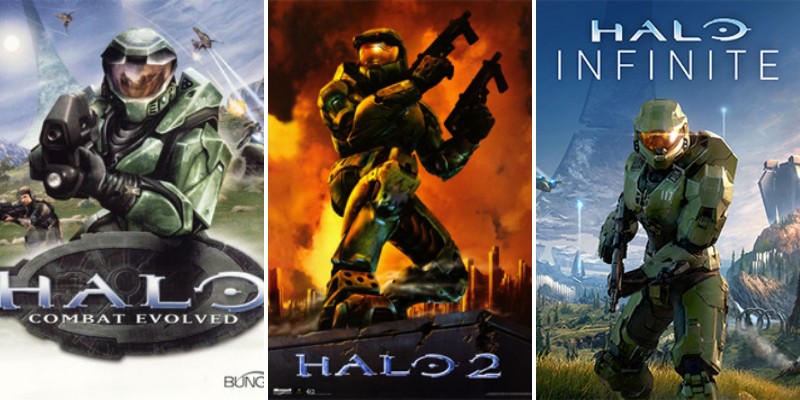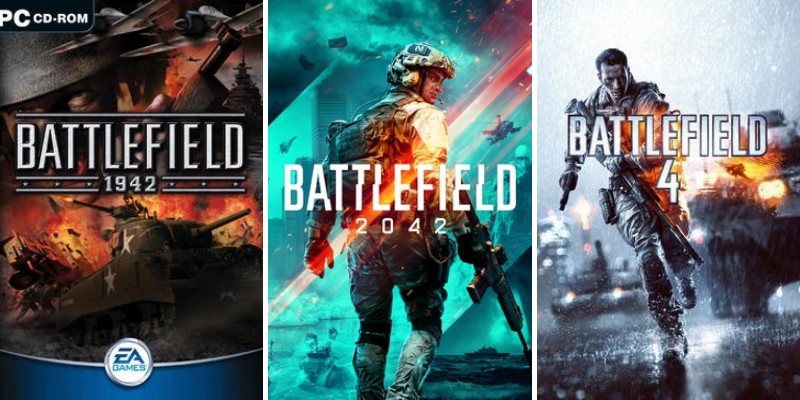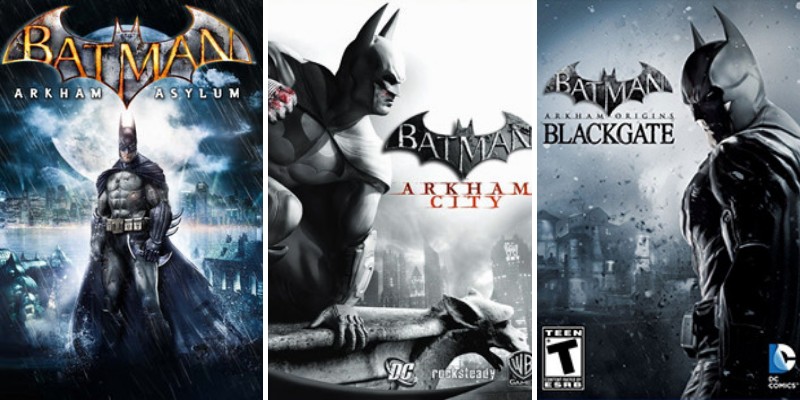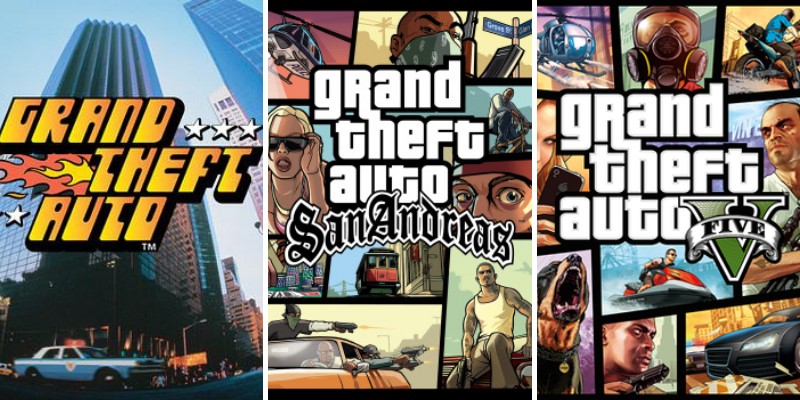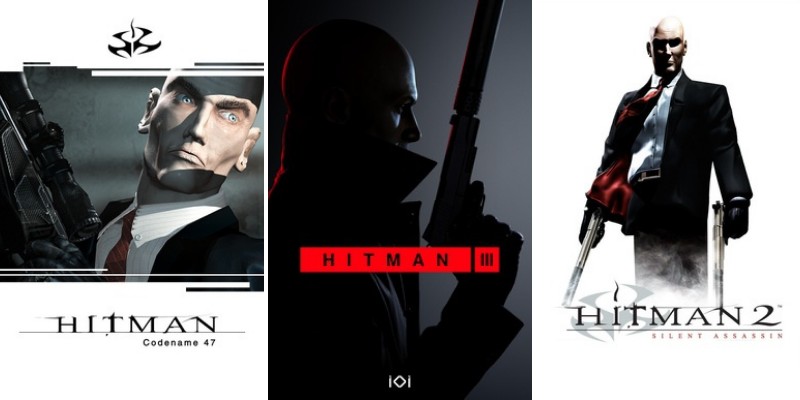Tomb Raider is an action-adventure game franchise that is based on the adventures and explorations of the main protagonist, Lara Croft.
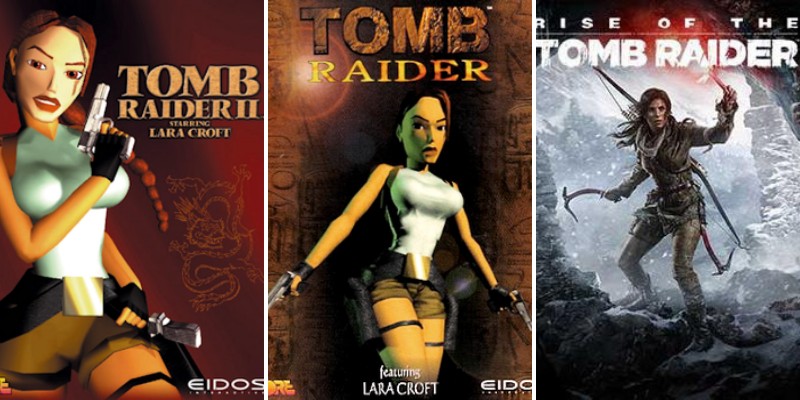
There are at least 20 game editions of this series to choose from. In this article we’ll explore and describe all main Tomb Raider games in order of release.
Tomb Raider (1996)
First released on the Sega Saturn but finding its real audience on Sony’s Playstation, Tomb Raider was one of the earlier 3D games to really help define what 3D action could be.
A relatively simple and clunky game by today’s standards that followed a simple plot and felt an awful lot like Indiana Jones with the serial numbers filed off, the game went on to be one of the biggest hits of its generation and led to the rise of one of the biggest names in gaming history.
The original Tomb Raider saw the archaeologist Lara Croft hunting an artifact called the Scion of Atlantis.
Though the shooting and jumping feel absolutely ancient today, it’s still easy to see why the game was so important in its time.
With some clever level design and a protagonist that was easy to love, Tomb Raider became a cultural icon shortly after release.
Tomb Raider II (1997)
Tomb Raider II was a game that had big shoes to fill. Tomb Raider became a juggernaut quickly after its release, both due to its excellent design and its iconic protagonist.
The logical follow-up, which was released on PC and the Playstation, had to prove that Lara had staying power. Luckily for fans of the series, the game definitely did so.
Tomb Raider II was a marked improvement on almost every level. Not only did the game look better, but it also brought in more weapons, more skills, and the ability to save at any time.
The biggest inclusion, though, was the ability to climb. Lara could now scale walls vertically and horizontally, opening up new vertical worlds and helping to improve the flow of the game.
Though the plot of Tomb Raider II still feels a bit light compared to what would come later, it’s hard to deny that this game is where the series hit its stride.
Tomb Raider III (1998)
This third entry in the series, again released on Windows and Playstation, was certainly meant to push the Tomb Raider series into the future.
Built on an upgraded engine, this game looked better than its predecessors and brought with it a sense of speed that had largely been lacking from the older games.
While the technical bona fides were certainly there, what most couldn’t predict was how the game would fair.
Though Tomb Raider III was a financial success, it was the first game in the series to get negative notes from critics.
Usually criticized for not doing enough to change up the now-aging tropes of the series, the game was criticized for its odd difficulty spikes and its less-than-appealing plot.
Though Lara herself would still grow in popularity, Tomb Raider III marked a downturn in the popularity of the series itself.
The Last Revelation (1999)
One thing to keep in mind about the Tomb Raider series is the blazing-fast speed of development of the original games.
With one game a year releasing between 1996 and 1999, the developers at Core Design were getting burned out by the adventures of Lara Croft.
With diminishing returns finally starting to emerge, the developers decided to bring both the series and Lara Croft herself to an end.
The Last Revelation was not only the end of the original series, but also the end of Sony’s exclusivity agreement with Eidos.
This meant that the game was also released on Sega’s Dreamcast, which allowed the developers to push the graphical limits of the game beyond what they could do on the Playstation.
The game itself was praised for returning the kind of mechanics that made Tomb Raider II stand out, but critics almost universally agreed that even this attempt to lay Lara to rest felt a little bit stale.
Tomb Raider (2000)
While Lara might have been dead on the console, that didn’t meant that she was gone in the world of handhelds.
2000’s Tomb Raider saw Lara Croft take on her first handheld adventure on the Gameboy Color.
Though a fairly simple game, reviewers loved the fact that each of the game’s 14 levels had their own gimmicks and the fact that the game seemed to push the Gameboy Color to its limits.
Though only a modest success compared to the rest of the series, the game did manage to ensure that future handheld sequels would be made.
Tomb Raider Chronicles (2000)
While The Last Revelation was meant to bring Lara Croft’s character to an end, this didn’t mean the Tomb Raider series stood any real chance of ending.
The series still turned a significant profit, after all, and plans were in place to keep things going.
Chronicles wasn’t exactly a labor of love, though, and the game was one of the worst selling in the history of the franchise.
Chronicles was a series of flashbacks that were told after Lara Croft’s presumed death.
Levels were linear and a bit boring, with basic puzzles and boring fights. Attempts were made to bring in at least a few new mechanics, but most remember this game as something of a quick cash grab as Eidos moved on to greener pastures.
Chronicles remains the worst-reviewed game of the mainline Tomb Raider series.
Curse of the Sword (2001)
This follow up to the 2000 Tomb Raider could very easily just be thought of as more of the same when it comes to the original.
Using the same engine and most of the same mechanics, Curse of the Sword saw Lara on a new adventure that had many of the same beats as the previous game.
The game was reviewed moderately well, but most critics saw the game as doing too little to innovate on the then-aging GBC.
The Prophecy (2002)
This iteration of the game moved the series to the Gameboy Advance, and with it game some major graphical upgrades.
The first isometric action game in the series, The Prophecy was a fairly shallow game that received mixed reviews for its repetitive nature. Still, it did provide a relatively solid experience for a handheld game and helped to ensure that Tomb Raider would stay fresh in the minds of consumers.
The Angel of Darkness (2003)
While Chronicles was developed for the Dreamcast and Playstation, a new generation of console was being released and Eidos was ready to target a new market.
As such, a new team was designed to create a game for the then-next gen Playstation 2.
With the longest development lead time of any game in the series (three years), the game was poised to try to compete with the newer action games that had been developed in the wake of the original trilogy.
Unfortunately, Angel of Darkness is remembered more for its terrible controls and awkward levels than it is for its compelling narrative.
A game that suffered terribly from feature creep, much of what had been promised to players had been left out and the game itself felt like a throwback to an earlier age of gaming.
This was Core’s final game in the series, and a sad note on which the studio went out.
Legend (2006)
For the very first time, the Tomb Raider series went dormant. After the back-to-back flops of Chronicles and Angel of Darkness, a new studio was brought in to work on the title.
Crystal Dynamics looked to redesign the series for the Playstation 2 and Xbox 360 generation. The end result, Legend, was widely praised as a return to form for the series.
The plot of this game saw Lara chasing after the mythical Excalibur, jetting across the world and solving a number of fantastic puzzles along the way.
This game renewed an emphasis on movement and exploration, with a movement system that was much more fluid than previous games and a sense of vertical design that made the levels feel huge.
This, along with the graphical upgrades and improved combat, helped bring Tomb Raider into the modern era in a way that made it once again competitive with the games that it had inspired.
Anniversary (2007)
After a decade in the public eye, it was time to celebrate Tomb Raider. Doing so meant going back to the roots of the game and creating the first remake in the series.
Anniversary would be a remake of the 1996 Tomb Raider, but it would take place in the Legend continuity and retain the control scheme of the newer games.
Generally well-reviewed and well-liked by players, this game that released on the Playstation 2, Xbox 360 and Wii was nonetheless the lowest-selling entry in the series thus far.
Underworld (2008)
Built on the same engine as Anniversary, Underworld was the third and final entry in the new Legend continuity.
Also released on the PS2, Xbox 360 and Wii, this game was a direct sequel to Legend and picked up some plot elements from Anniversary.
A well-regarded game, it was also the last Tomb Raider made by Crystal Dynamics.
Though the final entry in the Legend continuity, Underworld nonetheless brought with it a number of fantastic new elements.
Not only was combat greatly improved by dual targeting, but it also gave Lara a grappling hook to increase her verticality.
The game was widely criticized for its poor camera and bugs, but the praise heaped upon its non-linear design and excellent new combat system made many players feel confused when it was announced that the series would be going in a different direction.
Lara Croft and the Guardian of Light (2010)
After the relative flop of Underworld, Tomb Raider was a series without a real direction.
Though there were a number of potential plans in the works, one thing that almost no one saw coming was a co-op, arcade-style game.
Surprisingly, though, Lara Croft and the Guardian of Light made a reasonable splash upon release.
Released on PS3 and Xbox 360 as well as mobile platforms, Guardian of Light was like nothing that had come before.
Players took control of Lara or a warrior named Totec in an isometric arcade-style game, with much of Lara’s mobility removed in favor of arcade-style twitch shooting.
A fun, cooperative romp that was light on the story but heavy on the action, the game was a surprisingly good fit for Lara Croft and a great way to show that the aging series still had a lot left to offer the world of gaming.
Tomb Raider (2013)
After five relatively quiet years in the main series, it was time to bring Tomb Raider to a new generation of consoles that started with the Xbox One.
Rather than continuing the Legend continuity, the developers decided to try something new by showing Lara in her earliest days.
No longer the confident adventurer, this iteration of Lara was a young student on her first real journey, forced to survive on an island that left her crew stranded and separated from one another as they encountered a mysterious force.
Tomb Raider was a much more realistic game than its predecessors. While most immediately noticed that Lara herself was rendered in a far more realistic manner than her previous iterations, she also moved and fought more like a real person.
The game was well known for the incredibly gory deaths that could happen when events were failed, but beyond that the game was one that felt like it was full of realistic consequences.
Lara Croft and the Temple of Osiris (2014)
Though the reboot of Tomb Raider had been successful, that didn’t mean that only the new version of Lara would go forward.
Since Guardian of Light had been a relative success back in 2010, it made sense to bring a new version of that game forward as well.
Available on Xbox One, Playstation 4, and PC, this game would take the same basic mechanics of the previous game, add in two new characters, and allow players to have an enhanced experience thanks to the hardware of the new gaming systems.
Temple of Osiris is a straightforward arcade action game with players taking on the role of one of four characters.
Each character has a special skill that he or she can use on the map, which allows players to prioritize teamwork as they put their arcade skills to the test.
A modest hit, Temple of Osiris helped to keep the momentum of the reboot going as player waited for the next entry in the series to be released.
Lara Croft: Relic Run (2015)
While Relic Run was largely a Temple Run riff, it’s amusing to note that this game actually takes place in the Lara Croft sub-series and actually features some unique mechanics.
While players generally dodged obstacles on this endless runner, they also took control of several vehicles and even guided Lara through some boss fights.
Not exactly the most complex game in the series, it was still a modest hit on various mobile platforms.
Lara Croft Go (2015)
Go is, at its heart, a puzzle game. While players do take control of Lara, they guide her along a game board that is filled with obstacles and enemies.
Much of the game is dedicated not to reflexes or combat, but to figuring out the best ways to move across the board while keeping Lara alive.
An incredibly popular mobile title, Go helped to show off the fact that the Tomb Raider franchise still had plenty of directions in which it could go.
Rise of the Tomb Raider (2015)
Rise of the Tomb Raider followed in the footsteps of the previous entry in the series, bringing players a younger, less experienced Lara Croft who nevertheless still traveled the world in pursuit of mysterious artifacts and hidden cities.
Unlike the previous game, this one dug a bit deeper into Lara’s childhood and the death of her father, a story hook that provided a sense of drama that was somewhat lacking in the first entry in this part of the series.
This game is mechanically very similar to its predecessor, though the gory deaths for failure are toned down a bit.
Lara is also significantly more confident and competent here, hardened by her experiences in the first game and bereft of much of the support system that she had in that game.
The world is also bigger here, with more to see and explore as Lara uses a few new weapons and abilities to open up the map.
Shadow of the Tomb Raider (2018)
The final game in the reboot trilogy, Shadow of the Tomb Raider deals with something that’s been relatively rare in Lara’s journey – consequences.
Mechanically very similar to the two games that preceded it, Shadow of the Tomb Raider is a more introspective game that forces players to not only be on top of their games in terms of platforming and combat, but also to stop and think about the actions that Lara has taken over the course of her long career.
Shadow of the Tomb Raider follows Lara Croft as a more confident Tomb Raider, now with a bit more ego when it comes to the archaeology game.
When she makes a tragic mistake on one of her adventures, she’s left to try to make things right before her actions lead to consequences that could spiral out of control.
With some of the best tombs of the reboot trilogy, this game was largely overshadowed by those who found the story to be less compelling than the other entries in the reboot series.
Tomb Raider Reloaded (2021)
This top-down shooter is a bit of a departure from the current series, taking most of its cues from the classic iteration of the game.
Though relatively little is known about it at the moment, it looks like the game is meant to be a return to mobile action for the series.
Image Credits
By The box/cover art can or could be obtained from Core Design and Eidos Interactive., Fair use, https://en.wikipedia.org/w/index.php?curid=36018689
By The box/cover art can or could be obtained from Core Design and Eidos Interactive., Fair use, https://en.wikipedia.org/w/index.php?curid=36003804
By http://www.vg247.com/2015/06/01/rise-of-the-tomb-raider-new-trailer/, Fair use, https://en.wikipedia.org/w/index.php?curid=45302127

